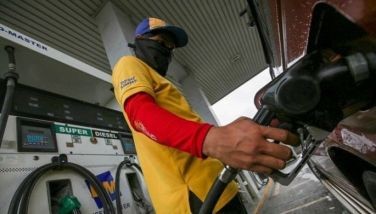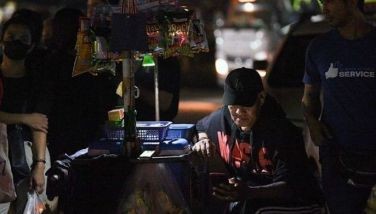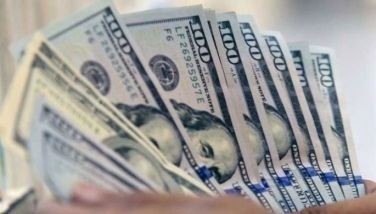A tale of two cities
(First of two parts)
Because of our continued tradition of celebrating the New Year with fireworks, I normally opt to spend the holiday abroad to avoid the smoke pollution that triggers my asthma.
Normally, I also opt to go to a country with a cool climate and, thus, I usually go to nearby Hong Kong or Japan where fireworks is limited and restricted to a certain area and a couple of minutes just to ring in the New Year, instead of our hours long fireworks fest.
However, this time around I chose to go to the similarly warm climate of Bangkok since I had already spent a long two weeks in Japan last October to attend the Japan Mobility Show and enjoy an extended vacation during the mild autumn of the Land of the Rising Sun, where I also gorged myself on sushi and sashimi, udon, somen, tempura, wagyu, so much so that I wanted to indulge in my third favorite Asian cuisine, which is Thai food.
Bangkok
My last visit to Bangkok was in 2016, at which time there was an unusually cool December weather due to a cold front. There was also a flurry of construction for the expansion of Bangkok’s underground mass rapid transit or MRT, which had started in 1997, and has since expanded to the current 10 lines as of this year. Their elevated mass transit system known as the Bangkok BTS, which started construction in 1999, continues to expand and plans include to have 13 lines by 2029.
My first visit to Bangkok was in the late 1980s when the international airport was then the Don Mueang Airport, which was much closer to the city, and there were no expressways, and traffic was almost non-existent. The main city roads were quite wide and there was no mass transit. However, what was popular and could be a nuisance were the ubiquitous tuktuks, an elongated version of our regressive tricycles.
Bangkok at that time was similar to the Philippines, although the weather was always a bit warmer because they are much nearer to the equator. It was also still quite provincial since baby elephants were still allowed into the city and it was not unusual for tourists to see them, feed them with bananas, and even rub or pet them for a slight fee near the then commercial area around the still standing MBK or Mahboonkrong, built in 1985, or the Pathumwan District.
The Pathumwan District was then the upcoming modern shopping area, with a lot of small shopping arcades selling a wide variety of cheap clothes and plenty of Thai handicraft and real Thai silk products. Nearby, but at that time quite a challenge to find because tourist maps were not quite a thing yet, was the more local shopping area of Pratunam.
By the 1990s, my trips to Bangkok allowed me to witness the start of the horrific traffics that began to plague the city as Thailand’s economy experienced an economic boom from 1987 to 1996, so much so that travel to and from the airport to the hotel and from the hotel to airport would require anywhere from an hour to an hour and half to ensure that one would not miss their flight. However, soon enough, the Thai government embarked on an infrastructure program that saw the construction of expressways and the start of mass transit projects.
By the early 2000s, my visits to Bangkok would see improvements, with a new airport – the Suvarnabhumi Airport – being constructed and eventually replacing the Don Mueang despite criticism that it was much farther and would put off tourists from visiting Bangkok. I also saw investments being poured into Thailand, with Toyota Motors Philippines even inviting us to see their factory there while the Philippine government continued to dicker about the incentives to attract automotive production.
In another invitation, this time from the Thai agriculture company Charoen Pokpand Foods, I personally saw, learned and admired Thailand’s local dairy industry, as well as CPF’s various food manufacturing operations. It was then becoming quite clear that in each decade, Thailand was quickly and quietly leaving the Philippines in the dust as it sped towards economic progress.
Tourism
It was also becoming quite apparent that tourism in Bangkok was becoming more vibrant, with more modern hotels being built and shopping malls rising. In the late 1980s, the hotel we had stayed in was of much inferior quality than in Manila. By the 1990s, the hotel offering in Bangkok had increased and improved and it was more noticeable that there were more Europeans visiting Bangkok than Manila.
I remember that in the 1990s, Bangkok was mainly known for its “Tiger” shows, which was a pseudonym for sex shows, and its famous Patpong entertainment area or bar strip. Over the years, Bangkok’s reputation has shifted to a more tourist friendly image even though its seedy reputation continues, but this time veiled with numerous massage parlors that also offer legitimate massages.
Bangkok’s transformation as an international destination has been transformed by its early investment in crucial infrastructure and in offering incentives to investors, and promoting itself as a tourist destination with its own unique culture.
Bangkok 2024
From my last visit in 2016, it was thus quite a moment of sadness for me to realize just how far behind we are now from Bangkok with their efficient airport, their extensive and it turns out reasonably cheap expressways, their cool and fast BTS Skytrain and underground MRT, their shift to e-vehicles, restriction of the pesky tuktuks, their vibrant and booming manufacturing sector as evidenced by visits to local supermarket chains and groceries where you can view their unique and distinctive food products – tom yum flavored pork rinds, fish skin, squids, durian products, fish sauce, dairy products, fruit drinks and products, food mixes, not to mention their restaurant scene which offers delicious and generous dishes at cheaper prices than in Manila.
The number of hotels has increased so much so that once upscale neighborhoods in the city have now been transformed into numerous chain boutique hotels offered at a range of prices that attract all types of tourists – from Europeans, to American, Indians, Koreans, South Americans.
Clearing immigration alone takes an hour even as the airport is already equipped with e-terminals, allowing for faster and efficient processing.
Even while the weather was a heat-zapping 34 degrees, tourists were enthusiastically shopping, eating, exploring and enjoying what Bangkok has to offer.
Even departing Bangkok is such a breeze, perhaps because it was still a holiday, the trip from the hotel to the airport was a breezy 30 minutes. Immigration was likewise a hassle free e-departure. The airport was filled with satisfied tourist still buying takeaway mango sticky rice at nearly double the price, and various Thai food products to bring home to their respective countries and families.
Chaos upon arrival
And once you get back to the Philippines, it’s back immediately to chaos at the airport – from whole families abusing priority lanes, to chaotic baggage retrieval and out to the traffic gridlocked arrival area!
Welcome back to the Philippines!
- Latest
- Trending


























